COLUMNS
ArchiTRAVELING
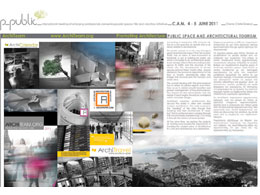
10 June, 2011
Public space and Architectural tourism
According to researches 63% of tourist visitors to a city practice an activity that is directly related to architecture.
Introduction
The public spaces of a city may change a great deal from the impact that the touristic traffic has on them. A new monument or landmark or just a building for public use which is included in an architectural guidebook strongly affects the surrounding public space, its traffic and the structure of the whole city. The development of private spaces around these tourist cities, spaces related to the economic exploitation of this flow of tourists, dramatically alters the image, the structure and the function of a wider area.
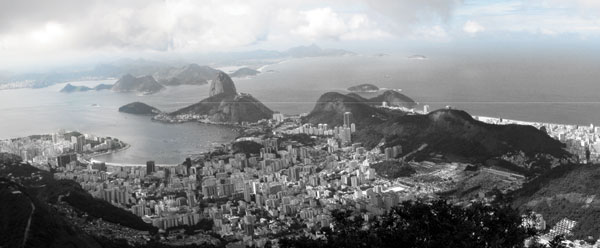
The overall dealing with this phenomenon has to relate to certain experts and institutions so as to obtain smooth transition and proper management of the phenomenon. The impact on the microclimate and the needs of each region should be considered within a broader design.
The lecture will explore the components of these issues through examples and through the experience of architectural tours.
Public space and Architectural tourism
The traditional concept of public space is connected to the user. The importance of space depends on the activities that people find in it. With their daily chores and normal behavior the users become familiar with the area and in that way they define space.
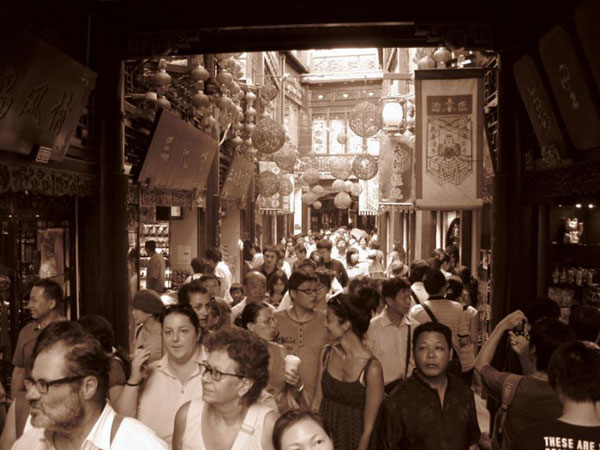
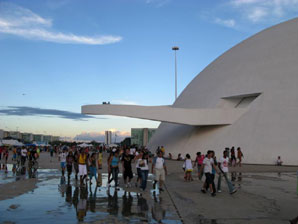
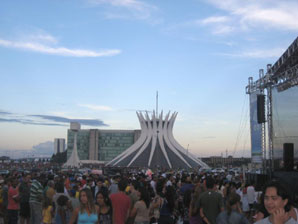
These users are either people who live the city through their everyday routine, who cross again and again the same areas and paths and tend to familiarize with a part of it and determine its significance, either tourists.
It is there where the distinction of public spaces between those that refer to the citizens and those that are meant to be used by tourists.
It is rare for a public space to be used by both categories of users, as residents have the tendency to avoid tourist sites for reasons of privacy, tranquility and speed of transportation.
The tourists that visit an urban public space also familiarize themselves with the area, without living in it or without the daily spatial activities, apparently.
Architeam organizes architectural trips around the world in cities with notable modern architecture. The main purpose of these trips is the "reading" of the cities though their buildings and their architecture. A "reading" that is achieved when crossing through the city and really experiencing it, not living it through the advice of travel guides.
At the same time, through the website 'Point of View' we present interviews with architects artists, critics and politicians on the subjects of:
- Architectural tourism,
- the importance of traveling, for architects in particular, but also for people in general,
- the added value of architecture in a city and Architecture as a destination
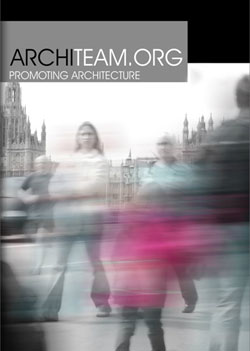
The added value of architecture in a city is obvious, both on a historical level and on its contemporary manifestation. Most urban public spaces (not including parks and gardens) are directly linked to certain tourist areas. Whether we talk about monuments or symbols or architectural projects or even public places themselves, the latter are considered as tourist destinations.
The public spaces that are related to tourism are formed based on this condition. The transportation, the habitation and the service of massive groups of tourists affect the structure, the form and the function of these sites.
A common feature of these tourist public spaces is the existence of vast open spaces, free from natural shade (trees) so that the eye contact with the monument is clear at all times. At the same time, hard materials are used on the floor so that the tourists can coexist and move easily. These two elements create a public space that when it is not used thusly, it turns into a vast deserted area, seeing that it cannot serve any other urban function of the citizens. It is certain that these moments seem insignificant to the popularity and the visibility of each monument or architectural project.
An extreme example is the church in Fatima (http://www.architravel.com/architravel/building/130) designed by Alexandros Tombazis, the architect, where he has actually created a huge public space that connects the old church with the new building, a place that once a year is visited by half million people.
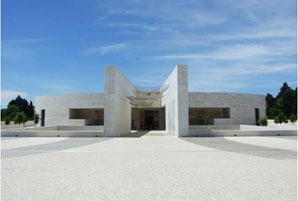
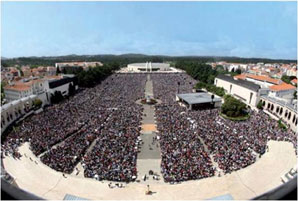
How you design such a public space, the architect was wondering during a speech, without being able to answer clearly. How do people experience this site during the rest 364 days of the year, whether they are everyday users or occasional pilgrims?
Similar examples of domestic occasional tourism cause the sacred festivals in Greece, that take place once a year and maintain temporary structures which end up becoming fixed in the surrounding area and are in essence an occupation of the area for a single annual use.
The same happens most frequently with sports stadiums. They are surrounded by vast public spaces which most of the time are used as parking spaces for the spectators and the rest of the days they look like a concrete desert around the structure. We found ourselves recently at the Allianz Arena (http://www.architravel.com/architravel/building/472%20) in Munich where that feeling is particularly strong, as the distance from the train station to the stadium had to be covered on foot, walking through a vast desolate and barren concrete route.
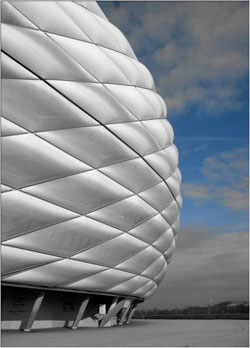
Another example of public spaces are the EXPO sites worldwide. For these exhibition sites, either pristine areas are used or vast areas are being expropriated to house mainly huge areas that surround the pavilions. These sites are designed and manufactured to last for a short period of time, so they don't have to integrate all the aspects of permanent architecture. As for the pavilions, they are mostly egocentric structures with references to the manufacturing country and covered with unusual facades, all indicators of a massive temporary tourism.
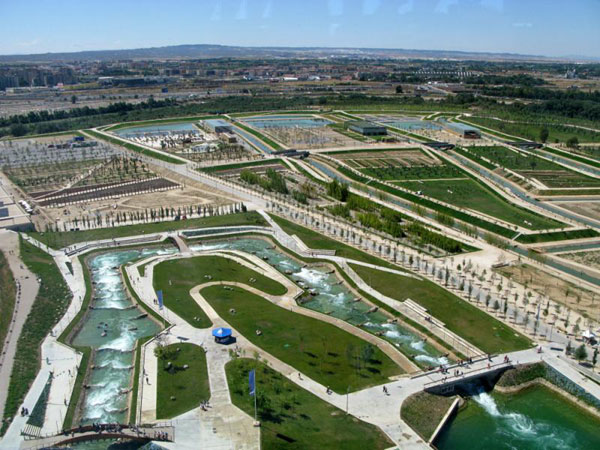
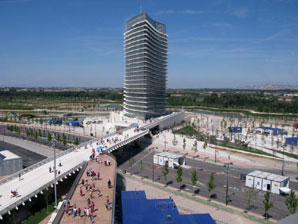
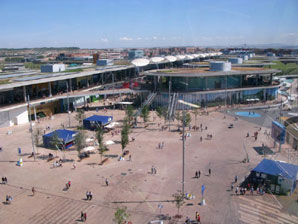
Within the various issues that an Expo has to deal with, such as the transportation the economy and the planning, the real challenge for any World Expo is the after-use of the Expo site and the buildings left over. This is a task not as simple as to re-identify a commercially viable way of their new usages. We must have a particular prediction and sensitivity so, upon completion, the management of urban space that occupied to come up with a meaningful after-use that can continue to introduce the same cultural and social significance as done by Expo. The interest of the EXPO therefore lies not only in itself and in that time is performed, but directly the long-term aspects of urban planning.
It is easy to find some examples in Paris, which happens to be the host city of some previous world expos.
- La Tour Eiffel (Expo 1889)
- Le Champs de Mars (Expo 1889), today a public park which holds Paris' largest open-air concert once a year
- Le Grand Palais ( Expo 1900), today Art Museum
- Le Petit Palais (Expo 1900) , today Palace of Discovery
- La Gare d'Orsay (Expo 1900), today Art Museum
- Le Palais de Tokyo (Expo 1937), today Modern Art Museum
- Le Palais de Chaillot (Le Trocadero) (Expo 1937), today made up of a City of Architecture and Heritage, a Museum of Human Civilization and a Theatre
These buildings have not only contributed to a new look of the map of Paris, but have also introduced important cultural contents into the Parisian life, making Paris a famous city of culture and charm, admired and visited all year round by people from four corners of the world.
If the 19th and 20th century celebrated the early stages of industrial revolution, as illustrated by the buildings above mentioned which reflected the era when one needed a gigantic vertical structure such as Eiffel Tower to demonstrate one's mastering of massive machines and advanced technology, In the 21st century it is no longer necessary to demonstrate any technical performances.
The 21st century is the century of environment and sustainable development. Today architects and city planners are expected to think up new neighbourhoods and cities, new public spaces, new means for production of historical urban heritage and transform land into a city with superior living conditions and in an environmentally-friendly manner.
But what are the benefits from the right management of public spaces and urban design when we use them as means for the development of a permanent urban tourism?
Tourism represents one of a relatively small number of economic development strategies available to urban regimes.
Bilbao (http://www.architravel.com/architravel/building/1112%20) has set an example on how architectural and urban design can be used as means of development, and urban tourism development in particular. Bilbao's local economy, mainly based on old industrial units in decline, was regenerated by the urban redevelopment schemes of the underused industrial area located along the riverside in the centre of the city. Large scaled urban design interventions and avant-garde physical design of both public open spaces and buildings, and especially the avant-garde design of the Guggenheim Museum of Modern Arts by Frank O. Gehry have transformed Bilbao into an international tourist place. Local economy has been gradually restructured towards urban tourism and its services.
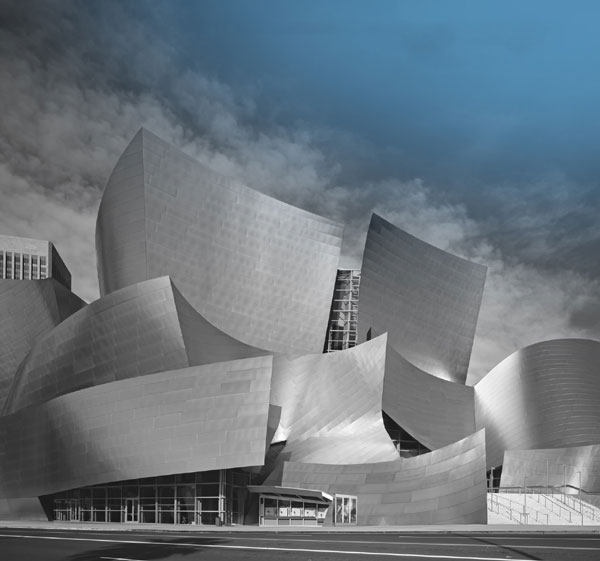
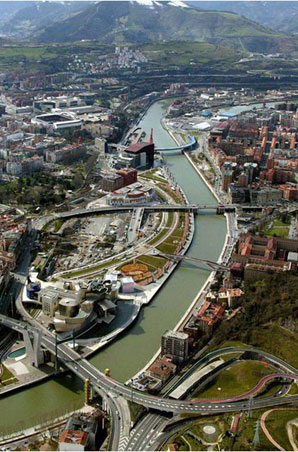
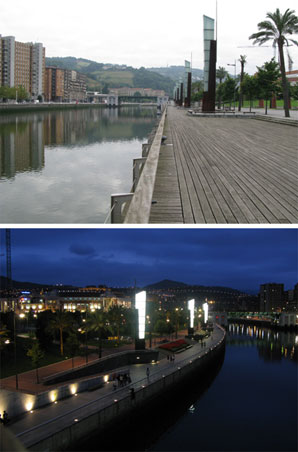
The building of the Guggenheim Museum does reinforce an emerging new paradigm concerning the relationship among urban design, urban space morphology and urban tourism: irrespective of the particular functions and activities accommodated in space, it is avant-garde design of both buildings and open spaces that can make urban space morphology in itself and of itself a sightseeing, a tourist resource.
The emergence of the above new paradigm, the support of architectural and urban design, the exploitation and the 'use' of public spaces as means of development, are important for the development prospects of all cities. Therefore, evaluating public-sector regarding tourism policy, the issues boil down to government's role in fostering fair practices of such a development, to the kind of deal the public sector makes with developers and service-providers, and the extent to which policy fosters equitable distribution of the proceeds.
This means that the target is not only the commercialization of public spaces in a way that will bring the biggest incomes for a certain group of people or time, but instead the development of an urban design that comes up from the cultural analysis of tourism and gives it historical value and authenticity.
It is relatively easy to enumerate criteria for judging economic consequences. In contrast, reaching conclusions about the desirability of tourism as it affects culture ultimately boils down to a hierarchy of values. The massive and uncontrolled tourism production, independently of the economic benefits that gave when it was created, can not give any quality and durability in a public place, except from substitute sites without substantial anthropological value and experience from such an area.
It is critical important to evaluate the criteria for the development of an urban design and use of a public space that leave its visitors and inhabitants with a long-lasting memory and is the vehicle to deliver a better city to future generations.
Alexios Vandoros, Sandra Kalliagra, Anagnostou Maria
Related articles:
- Beijing, Shanghai and a short story ( 27 February, 2011 )
- ArchiTeam interviews the artist COSTAS VAROTSOS ( 10 February, 2011 )
- ArchiTeam interviews the mayor of Bilbao Iñaki Azkuna ( 10 March, 2011 )
- ArchiTeam interviews the architect MICHEL ROJKIND ( 25 July, 2012 )
- ArchiTeam interviews the mayor of Curitiba Luciano Ducci ( 08 April, 2011 )
- ArchiTeam interviews the architect ALBERTO ALESSI ( 25 April, 2011 )
- ArchiTeam interviews the architect BENEDETTA TAGLIABUE ( 09 May, 2011 )
- ArchiTeam interviews the architect and writer Charles Jencks ( 21 February, 2013 )
- ArchiTeam interviews the architect LORCAN O' HERLIHY ( 13 April, 2012 )
- ArchiTeam interviews KAY HUGHES ( 12 August, 2012 )
- ArchiTeam interviews ALISON BROOKS ( 03 January, 2013 )
- ArchiTeam interviews the architect Sir Terry Farrell ( 15 August, 2014 )










